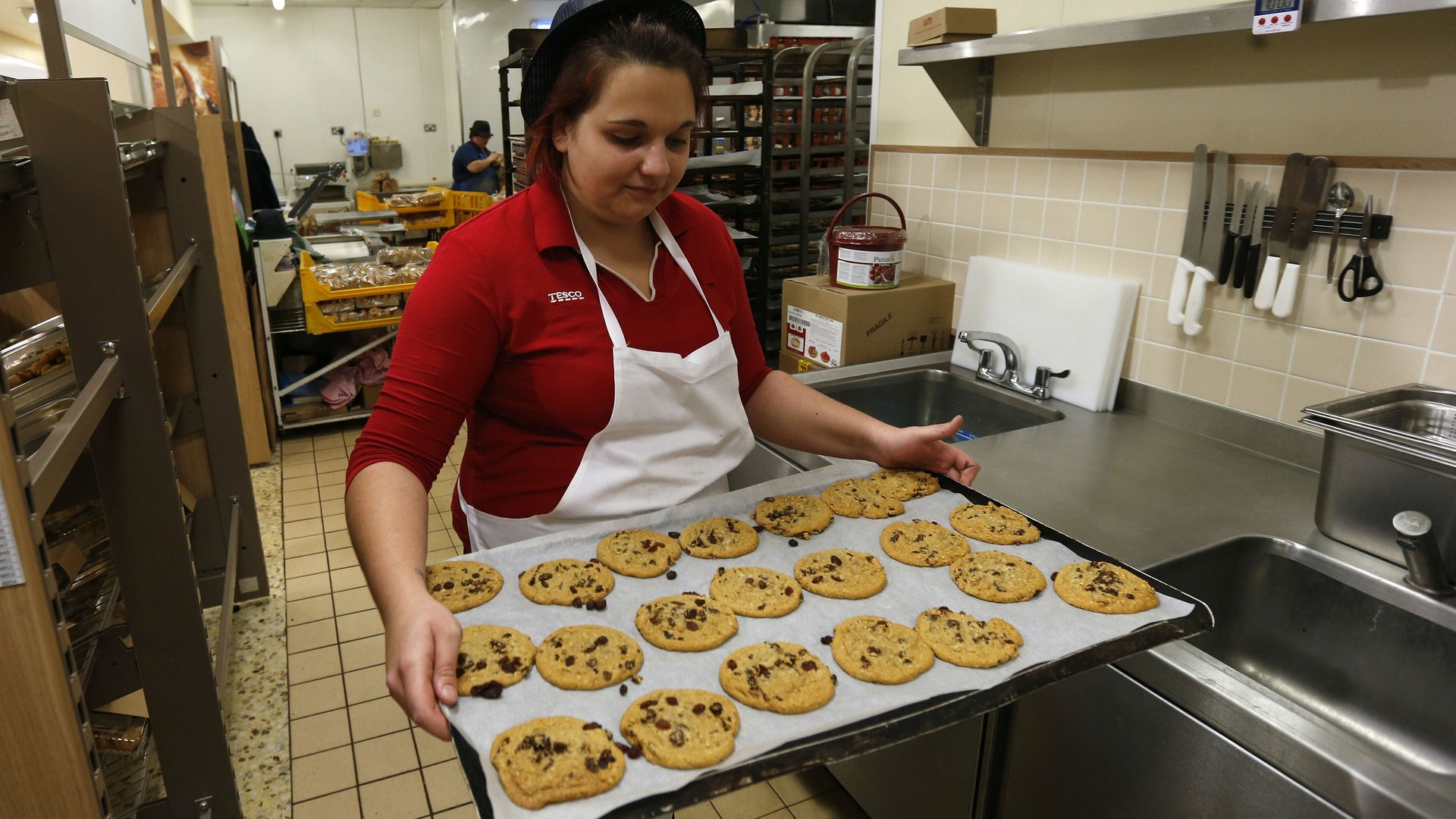There’s a scientific reason why chocolate chip cookies and milk taste so good together
Why do chocolate chip cookies dipped in milk taste so good?


Why do chocolate chip cookies dipped in milk taste so good?
Matthew Hartings, a professor of chemistry at American University, told Quartz that it’s partially due to the chemical compounds interacting on our tongues.
Chocolate is a combination of cocoa butter (pure fat) and cocoa powder, which wouldn’t ordinarily mix. But, chocolate also contains chemicals called phospholipids, which act as emulsifiers and allow foods with a lot of fat (like oil and cocoa butter) to mix with substances without fat (like water and cocoa powder).
Milk is also full of emulsifiers. Without them, Hartings explained, the fat in milk would “pool at the top”—similar to the way oils do in all-natural nut butters.
Chocolate chip cookies have a lot of fat in them. When they hit your tongue, the emulsifiers in milk “help to smooth out the chocolate as you’re eating it,” Hartings said. Though your tongue can pick up the full-bodied taste of the cookie eventually, the milk quickens this process, and makes sure your tongue receives an even cookie coating. Without it, the cookie may be a little more gritty.
Milk also helps mellow out the vigor of the sweet cookie flavor. “Cookies are meant to assault our senses a little bit with their sweetness and their shock of flavor,” Hartings said. But sometimes, that kind of intensity is not what we’re craving. “Sometimes, we need milk to calm it all down a little bit. And it obviously doesn’t work as well with something like water” because water doesn’t have the same kind of fat and emulsifier combination.
Cookies also taste good with tea. NPR reports that cookies feature a chemical called methylbutanol, which contributes to the toasty flavor we associate with cookies and other baked goods. Dipping cookies into hot beverages release this flavor more quickly into your mouth.
But, Hartings explains, there are a lot of factors that go into the way we experience taste. When we taste something, different chemicals in food slather our tongues and waft up to our noses. There, the different molecules are picked up by receptor proteins that alert our brains that we’re experiencing a particular flavor. “We sense all of the flavor and aroma compounds at once,” he said. “When we taste things, it’s really an integrated sensory experience,” he said.
This integration means that taste cannot be winnowed down to a phenomenon of one chemical interacting in insolation with another. Instead, many different compounds are interacting with many others, including our own saliva and sensory receptors.
“When you start to combine foods…there may be some interactions that go on that fundamentally change how [the flavor molecules] interacts with your tongue.” In other words, simply because you have the same chemical in one food doesn’t mean you’ll experience it the same way in a different food pairing.
Hartings said that when we combine two foods with a shared flavor molecule “you’re really changing the overall flavor of both…in a very subtle and perhaps a very interesting way,” he said.
Though shared chemical compositions may be only a part of different enjoyable flavor spectrums, the curiosity of chefs and scientists has been tickled by the idea. Many have tried to devise less obvious combinations than milk and cookies. Companies like Foodpairing.com and blogs like Khymos have documented some pairings based on their molecular compounds. Some of the most interesting combinations are below:
Ultimately, though, Hartings said that culture plays an even bigger component in the way we understand food. “We’re just culturally biased to prefer different flavor pairings over others,” he said. “Culture does a better job of explaining ‘like’ and ‘preference’ than chemistry does.”